
[caption id="ADaytoVisitTewkesbury_Feature" align="aligncenter" width="1024"]
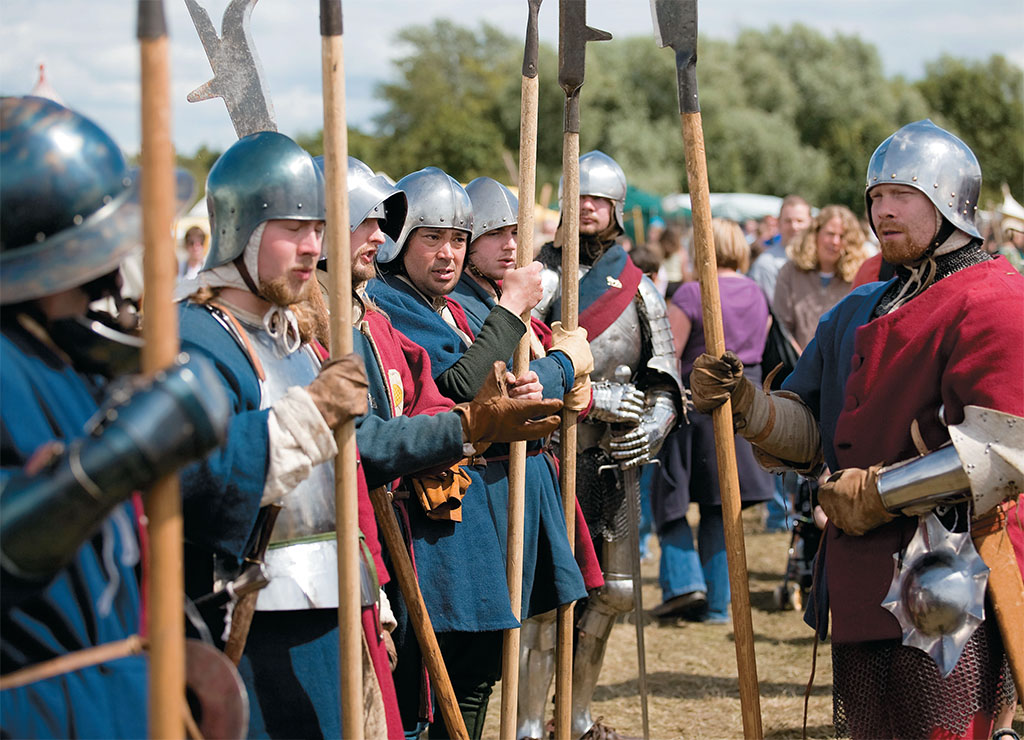
NICK TURNER
[caption id="ADaytoVisitTewkesbury_img1" align="aligncenter" width="148"]
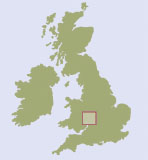
NICK TURNER
“HISTORY CAME to Tewkesbury for a day on May 4, 1471,” Steve Goodchild says. “The town had nothing to do with the Wars of the Roses before that, and it simply mopped up afterwards.”
We’re standing on Bloody Meadow on the southern edge of town. Goodchild, from Tewkesbury Battlefield Society, conjures a picture of Queen Margaret (wife of the imprisoned Henry VI), “standing on the hill barking orders like Maggie Thatcher.”
The queen, her son Prince Edward and their Lancastrian troops had been locked out of Gloucester and had sought a crossing of the Severn upriver. A Yorkist army under King Edward IV hounded them down, routing them on the field that funnels between trees before us. This, the penultimate and decisive battle between the two royal houses, between the emblematic white rose of York and red rose of Lancaster, secured the throne for King Edward.
[caption id="ADaytoVisitTewkesbury_img2" align="aligncenter" width="1024"]
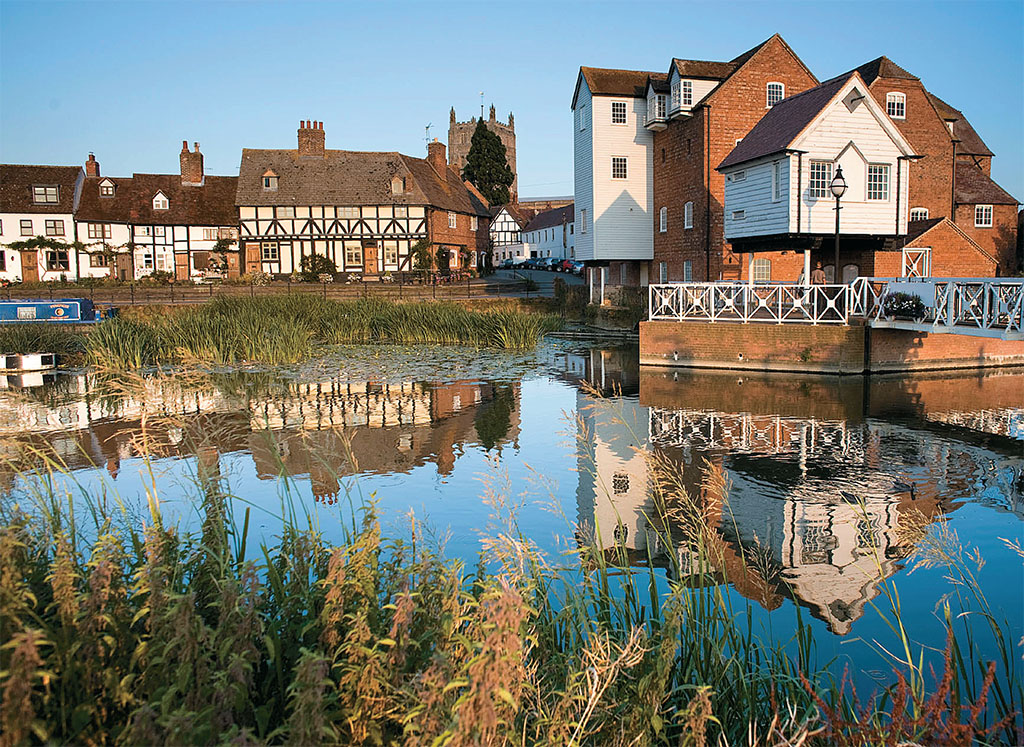
NICK TURNER
You can join monthly, two-hour guided walks of the waymarked Battle Trail, or anytime pick up a map from Tewkesbury’s visitor center for a quick dip. My own ramble marked the culmination of my “day in history” in the market town: The whirlwind drama may grab the headlines, but there’s so much more to entice here.
Around 10 miles north of Gloucester and Cheltenham, or a hop—and beguiling world away—from the M5 or M50, Tewkesbury sits at the meeting of Elgar’s Severn and Shakespeare’s Avon. Drive in via Church Street or High Street and you’ll view one of England’s best medieval townscapes: cute black-and-white, half-timbered buildings toppling forward and sideways, their jutting upper stories tipsy beside the more sober red brick of Georgian neighbors.
MY FIRST STOP was Out of the Hat on Church Street, the new visitor and heritage center created in a former hat shop. The venue fascinates on several levels: There’s the story of its restoration, reviving the times of glover Bartholomew Read who lived and worked here in the 17th century. Quite the most bizarre room I’ve seen in a while is his study-cum-sitting room, its marble-effect decoration intended to mimic a fashionable country house on a tiny scale. Imagine Read ensconced in his grandiose little snug, feeling rather pleased at how well his business is doing!
Out of the Hat also gives a lively overview of Tewkesbury’s history, with portable media players, displays and interactive exhibits. The town’s name allegedly derives from Theoc, a 7th-century local hermit; its riverside location made it a prime choice for a port. The Normans founded a great abbey—you can see it through Read’s expensive, glass-paned bay windows—and Tewkesbury later became famous for mustard making, brewing and malting, pin making and the framework knitting of socks.
All these have faded, though you can still buy Tewkesbury Mustard, piquantly noted by Shakespeare’s Falstaff in the line, “wit as thick as Tewkesbury mustard” (King Henry IV, Part II). The special blend includes grated horseradish root and packs a kick.
While the Roses clashed in 1471, the Civil War juggled the town between Royalist and Parliamentarian hands in the 1640s. Nature, too, has wreaked havoc: The ethereal view of the abbey and town rising like an island from flood waters this November was caused by the latest in a number of inundations over the centuries. The town mopped up, and trippers returned. Light industry continues to thrive around the outskirts.
Accommodation/information services plus local-interest books and maps complete the offering at the visitor center. I picked up a copy of Alleyways & Heritage Trails—Tewkesbury’s architecture is made for mooching, and all the sights are walkable. Shakespeare is said to have performed with a travelling troupe at The Olde Black Bear, which dates from the early 16th century. And Dickens sent Mr. Pickwick to dine heartily at The Royal Hop Pole.
Above all, the town’s quirky alleys intrigue: Hemmed in by rivers and flood plain, Tewkesbury could never expand outwards, and in the 17th century 90 alleys and courts sprang up, curling between and behind existing buildings to cram in more accommodation. Narrow and filthy, they reeked with poverty.
Today, the 30 alleys that remain are picturesque and rather des res. One is even incorporated into antiquarian/second-hand Cornell Books. Then, down Chapel Court I spied The Old Baptist Chapel, transformed from a home into a secret, Nonconformist place of worship in the 17th century. Rachel Thatcher from Out of the Hat brought a key and showed me the stone baptistry hidden beneath the floorboards.
[caption id="ADaytoVisitTewkesbury_img3" align="aligncenter" width="327"]
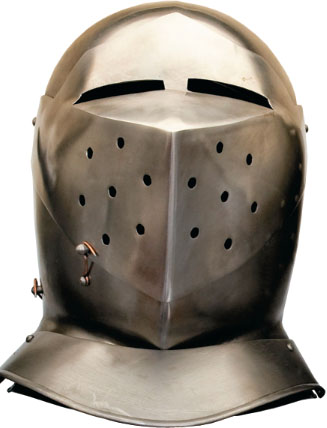
NICK TURNER
Head for Tewkesbury
www.cotswoldsandsevernvale.gov.uk
[caption id="ADaytoVisitTewkesbury_img4" align="alignright" width="1024"]
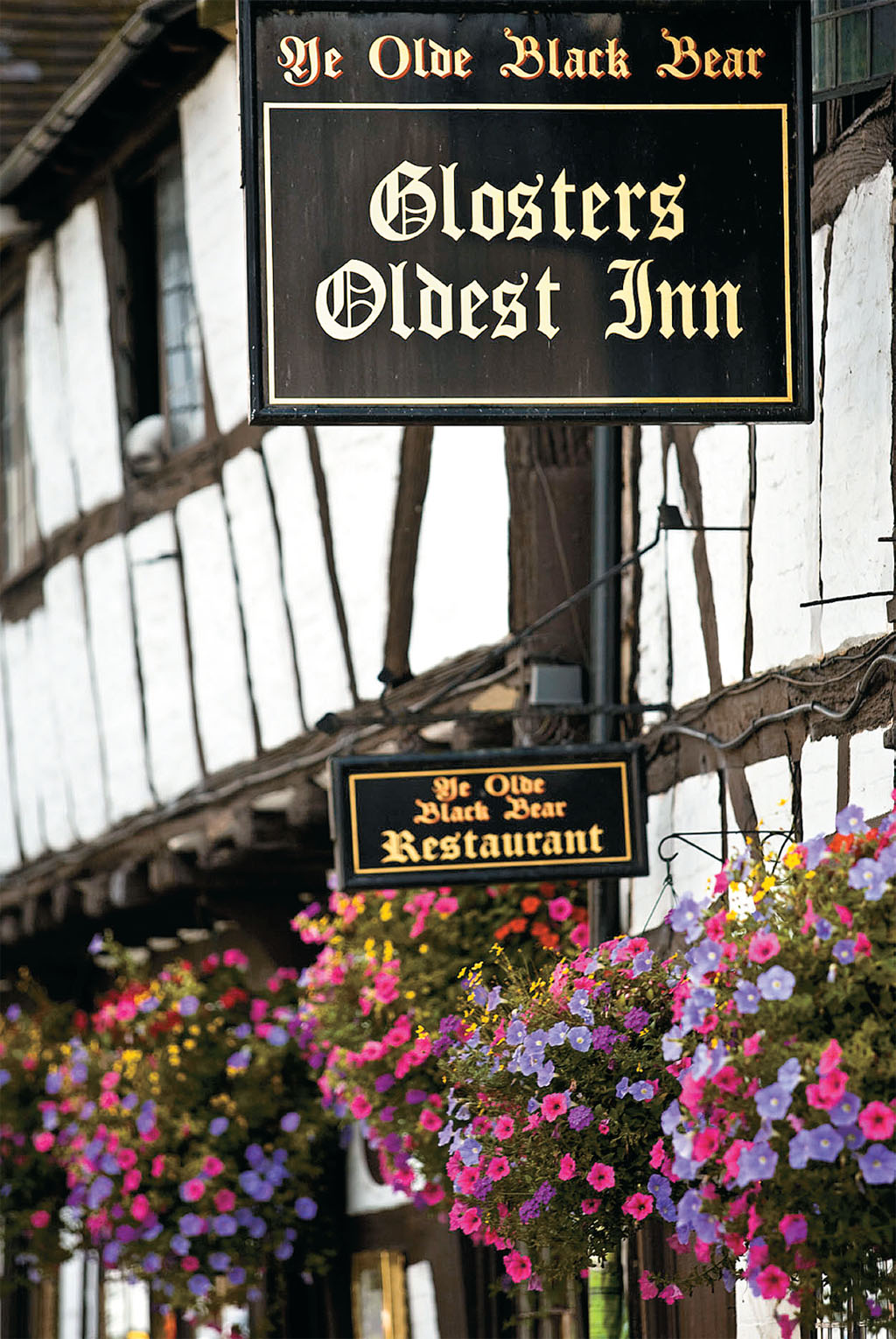
Maybe visit during one of the town’s colorful festivals. Calendar highlights include a Food and Drink Festival (early May) and a Medieval Festival featuring reenactments of the Battle of Tewkesbury (July).
JUST ACROSS THE ROAD, Tewkesbury Abbey upheld officially sanctioned forms of worship throughout. This is quite the town jewel, larger than many of England’s cathedrals. Founded in 1087, it welcomes visitors with a soaring 65-foot recessed arch entrance overlooked by one of the most colossal Romanesque towers in Europe. At the Dissolution the townsfolk saved the Benedictine abbey for their parish church, buying it from Henry VIII for £453—the value of the roof lead and the metal of the bells.
The neck-craning Norman nave has superb wooden roof bosses and fine medieval stained glass. In the Decorated-style choir, you’ll find a brass tablet marking the burial place of defeated Lancastrian Prince Edward, while the Sun in Splendour, badge of the House of York, looks down in triumph from the vaulted roof. A memorial elsewhere recalls U.S.-born Victoria Woodhull Martin, whose 1939 gift of adjacent land “to promote the great cause of Anglo-American friendship” has protected the abbey in its landscape.
After Out of the Hat, a town wander and abbey tour, it’s lunchtime. You could take a scenic half-hour boat trip to the Fleet Inn at Twyning or a fish ’n’ chip cruise. I stayed on land for a salad in Aubergine cafe bar and brasserie (Church Street).
Afternoon options include Tewkesbury Museum on Barton Street, for an eclectic rummage through more artifacts of local heritage. Two unusual gems on Church Street are The John Moore Countryside Museum and the Merchant’s House, in a medieval timber-framed terrace: Merchants lived in the back of the cottages and lowered shutters at the front to sell their wares. The museum celebrates local writer and prophetic conservationist John Moore, whose Portrait of Elmbury (1946) is a rich period picture of Tewkesbury. The Merchant’s House, atmospheric with gnarled 15th-century stairs, poky bedroom and narrow back garden conveys a real sense of early Tudor life.
Finally, my visit concluded on the Battle Trail with Steve Goodchild, looking for ghosts in the evening shadows. In many ways, wherever you go, they hover: From the abbey to Bloody Meadow, while banners fluttering along the streets recall the noble individuals who made history that particular day in Tewkesbury.





Comments